
01 Sep Mian Situ's View of the West
IN 1987, YOUNG CHINESE IMMIGRANT MIAN SITU WAS SKETCHING tourist portraits in Vancouver’s Stanley Park for $20 apiece, averaging about 10 a day each summer for four years. So today there could be hundreds of people with an original Situ in a drawer or closet, and they don’t even know it. News flash: Dig that portrait out and dust it off because today Situ’s paintings can sell for hundreds of thousands of dollars. In fact, at the 2008 Masters of the American West Exhibition and Sale at The Autry National Center, he set a personal record of $576,000 for San Francisco, April 18, 1906, memorializing the great earthquake that struck at 5:12 a.m., destroying the city’s Chinatown and beyond.
Situ, now 55, may be one of the few people in the world who benefited from Mao Tse-tung’s otherwise disastrous Chinese Cultural Revolution of the late 1960s. At 13, he was a good student in school, strong in mathematics, but with no interest in art. However, on May 16, 1966, Mao ordered all academic teaching stopped.
“We could go to school, but we did not have to learn anything,” says Situ. “With energy to spare, many young people turned to drawing and art for something to do. But the only art we could do was in support of the revolution — portrait after portrait of Mao, or art ridiculing his enemies.”
Mao had all the books locked up and most paintings destroyed, though some of the best in China were hidden and saved. “But I had a friend with keys to the library and I could get in,” Situ recalls, enabling him to study the Renaissance in Europe and the work of da Vinci and Michelangelo. Situ taught himself to draw and the rudiments of painting, gradually developing a love of art. However, he never saw an original piece of Western fine art until he was 30 years old. In the early 1980s, he recalls, “I attended a touring exhibition in Beijing, presented by Armand Hammer, and I saw Rembrandt’s Juno [1664-1665] and John Singer Sargent’s Dr. Pozzi At Home [1881].”
In 1971 the Guangzhou (formerly Canton) Institute of Fine Arts was reopened but only people who had worked in Mao’s Communist political machine could attend. “It was soon discovered that none of those students had any art ability, so they searched for a few genuine art students and I was lucky enough to be selected,” says Situ.
Situ spent six years at the college, earning a bachelor’s and master’s degree and learning painting technique from “some very fine instructors, including some trained in the great art institutes of Russia. There would be about 10 students in a class, sharing the same dormitory and spending all our time together.” He later returned to spend six years teaching at the institute.
When Mao died in 1976, restrictions relaxed and by 1978, China’s young students wanted to travel to Europe, the United States and Australia. In 1987, armed with a student visa, Situ arrived in California and started learning English at an adult school in Los Angeles. “I needed money. I had to eat. If someone had offered me a decent job, I would have taken it and maybe would never have become an artist. But nobody did,” says Situ. He found a gallery in Los Angeles selling what were obviously copies of major works and told the owner he could do better. “The owner said he got the copies very cheap from South Korea and [that] I wouldn’t accept what he paid. I said I’d take whatever he offered. Strangely, he insisted on watching me while I painted, and I asked $75 for the first copy, but he only offered $50. When I finished he said it was worth my price, and gave me $75.”
Situ only stayed in Los Angeles for a year before moving to Canada where, he was told, he would have a better chance of success, living, variously, in Calgary, Toronto and Vancouver. Though he continued his serious painting, gallery sales were not going well and money was short until he found the street artists of Vancouver’s Stanley Park. “I believed I could do better portraits, but first I had to get people to sit in my chair. I sat and waited for people to come to me. The other artists went out and sold themselves. I know that a good salesman will outsell a good artist, but my pride would not let me do that. When you are good, you do not have to beg,” says Situ. “Gradually I built examples of my work to show and, seeing the quality, people came to my chair.”
Galleries were still very reluctant to try the work of this young Chinese artist with a distinctive style. “When living somewhere new, you must learn the culture. I studied other artists to see what was selling. I did the Chinese countryside, Western and American landscapes, a beautiful lady, flowers — anything, but somehow my training always made my work look different. I tried to adjust, but couldn’t,” and galleries were not willing to gamble.
Today, his work is only represented by his own gallery in Laguna Beach, California, and by Trailside Galleries in Jackson Hole, Wyoming, and Scottsdale, Arizona. Looking back Maryvonne Leshe, managing partner of Trailside, says, “When I first saw his work, it depicted life in the Chinese countryside and that was different from what American buyers were used to. Then he started painting the American West and somehow there was a disconnect in the minds of many collectors when presented with cowboys and Indians painted by a man from China.
That’s a little strange because artists from Europe and Scandinavia have made the change, but for Mian it didn’t work. Settling on the Chinese experience in the American West was an inspired decision because now, to collectors, he is an outstanding artist, painting subjects about which he is clearly knowledgeable and passionate. Those same buyers now feel that no one has a more honest voice in representing the Chinese American experience than Mian,” Leshe says.
But, though all this was in his future, change was coming for Situ as he set up his chair in the shade of the trees in Stanley Park. “I took my stuff to a gallery in Calgary where the owner’s parents were Chinese. She looked at my work but did not take any. Two years later she called me in Vancouver and asked for a few pieces to show.” And they sold. And they wanted more and still more and by 1990, his Chinese pieces were selling well with collectors expanding into the United States.
In 1995, Situ sent a single piece to the Oil Painters of America National Juried Exhibition at the Greenhouse Gallery of Fine Art in San Antonio, Texas, and “I immediately forgot about it,” Situ recalls. That is, until the organization’s founder, Shirl Smithson, called to tell him he had won Best in Show with a $10,000 prize. “I had never imagined so much money. I was amazed.” But more was to come.
By the mid-1990s, Situ was selling more in the United States than in Canada, so in 1998 he, his wife, Helen, and daughter, Lisa, moved back to California and bought their current home in San Dimas, just north of Los Angeles, and Situ was granted a permanent resident visa.
Then came the phone call which, Situ says, “changed my life.”
The call, in the early summer of 2000, was from John Geraghty, noted art collector and a founding member of the prestigious Masters of the American West Fine Art Exhibition and Sale at the Autry National Center in Glendale, California. Geraghty invited Situ to exhibit in the 2001 show.
“I was astounded,” says Situ. “I had been to the show and knew they only invited the very top artists. I never expected to be included among them. I was thrilled, and then scared. The show featured the American West and my work was the Chinese countryside — not at all appropriate.”
Says Geraghty, who considers Situ to be the leading Chinese painter in North America, “I had to do a lot of talking — pointing to the vital role the Chinese immigrants played in opening the West, helping build the railroads, working in the goldfields, and Mian started to do some research.”
His very first entry in the Autry Masters, John Chinaman, won the Patrons’ Choice Award for 2001, starting an incredible list of 12 top Autry awards in eight years, including four more Patrons’ Choices, three Thomas Moran Memorial Awards for exceptional artistic merit, a Trustee’s Purchase Award, two intensely satisfying Artists’ Choice Awards and the first of the new Gene Autry Memorial Award in 2008, recognizing an outstanding presentation of three or more works. Today, he has become a chronicler of the Chinese experience in North America. “It didn’t start out that way,” says Situ, “but that does seem to be the way it is going.”
His other Autry winners have included Powder Monkeys, Golden Mountain and The Word of God — the last two being what Geraghty calls “truly exceptional works. When Mian was researching Word of God, I took him to a Franciscan monk at the St. Francis High School in La Cañada and the monk spent two hours explaining everything about the priest who would have been on an early immigration ship — all about the knots on the sash that would be around his waist, the nature of the sandals he would have been wearing and why the top of his head was shaved.”
The little girl asleep in Golden Mountain, recalls Situ, was a shot he captured with his camera one day when his daughter fell asleep on the couch at their home. While Powder Monkeys, he explains, is a dangerous practice the Chinese brought from their homeland that involves hanging in baskets down a cliff face to hand-drill holes for explosives in building the railroads, a task for which Chinese workers were paid $28 a month. “During my visits to China,” says Situ, “I have seen them still using the same technique in building irrigation systems through mountains.”
Meticulous with details, Situ has tramped the goldfields and old towns of California seeking authenticity of the Chinese experience. He’s had his brother in China find the right materials, dyed to the correct color and hand sewn to hang on his models as they would have more than 100 years ago. He’s traveled to Promontory, Utah, to sense the historic scene in the spring of 1869 when the Transcontinental Railroad was completed with massive Chinese labor input, and studied exact replicas of the Union Pacific’s locomotive #119 and Central Pacific’s Jupiter #60, which touched cowcatchers to mark the event. The resulting painting, Golden Spike Ceremony, has not yet been widely exhibited.
A Howard Terpning admirer, Situ says, “Each Terpning piece tells a powerful and significant story. That is what I am looking for. I look for meaning in an event more than appearance. A painting of the Chinese New Year might be fun, but when Chinese and Irish railroad builders put down 10 miles of track in 12 hours (a feat never matched), that has significance,” says Situ of his inspiration to paint Ten Miles in a Day. “I must find that underlying significance in an event before I start painting it.”
Geraghty draws a clear distinction between the Golden Spike Ceremony and Ten Miles in a Day. “Golden Spike includes actual portraits of real people involved at the time. Ten Miles (which sold for $251,200 in 2007, again at auction) involved an accurate depiction of people Mian developed through his research.”
Has Situ been successful in seeking to follow Terpning’s example of telling accurate, historical stories? From his home in Tucson, Arizona, Terpning says, “Yes, most definitely yes. Mian is a great painter, a superb painter. I can’t say enough good things about him both personally and professionally. He is a natural and extremely gifted storyteller who is doing truly remarkable work.”
Geraghty and Leshe are comfortable referring to Terpning and Situ in the same sentence, especially, says Leshe, if you allow for the fact that Terpning has had many more years to develop his technique. But for Situ it is a little overwhelming. “Howard Terpning is an absolute master. I can’t think of the right words to express my gratitude to him for saying such wonderful things. Such praise from him is wonderful, absolutely wonderful. It is … I’m sorry, I’m at a loss for words.”
For Situ, it has been a whirlwind seven years since his first submission to the Autry show with John Chinaman. “That title reflects the fact that Americans could not pronounce the Chinese names, so every Chinese man was called John Chinaman,” says Situ. “It sold for $33,000, and now people are paying $576,000,” he adds, shaking his head in near disbelief. But that was no fluke, says Geraghty. “It was a silent auction and there were two other bids in there of more than $400,000, one of them close to half a million.”
Most of Situ’s works sell at auction, which he prefers, because it means the buying public is putting a value on his paintings instead of himself. At present, he says, a little more than half of his pieces are historical in nature, but he expects to increase this percentage in coming years and reduce his output to concentrate on more large, historically significant and thoroughly researched pieces.
And would you believe that since 1987 only one person has ever called Situ to tell him that he still has his portrait from Stanley Park? But there has been one big change, says Situ, “Today I have to pay my models. In Stanley Park, my models paid me.”
- “San Francisco, April 18, 1906” Oil on Canvas | 46 x 76 Inches | 2007
- “Ten Miles in One Day, Victory Camp, April 28, 1869” Oil on Canvas | 38 x 80 Inches | 2006
- “Word of God” Oil on Canvas | 56 x 84 Inches | 2004
- Arizona’s Canyon de Chelly may seem like an unlikely topic for artist Mian Situ, but he fell in love with it on an artists’ trip a couple years ago and has done about 10 paintings of the area. He is shown in the studio of his Sam Dimas, California, home with his latest, unfinished canyon piece, A “Chance Meeting” (oil, 28 x 40 inches). “I love the color of the rock and the texture of the walls,” he says. “You can feel the history there.”
- “Festival of Balloons, San Francisco, 1911” Oil on Canvas | 48 x 40 Inches | 2008
- “The Golden Mountain, Arriving San Francisco, 1865” Oil on Canvas | 72 x 60 Inches | 2003






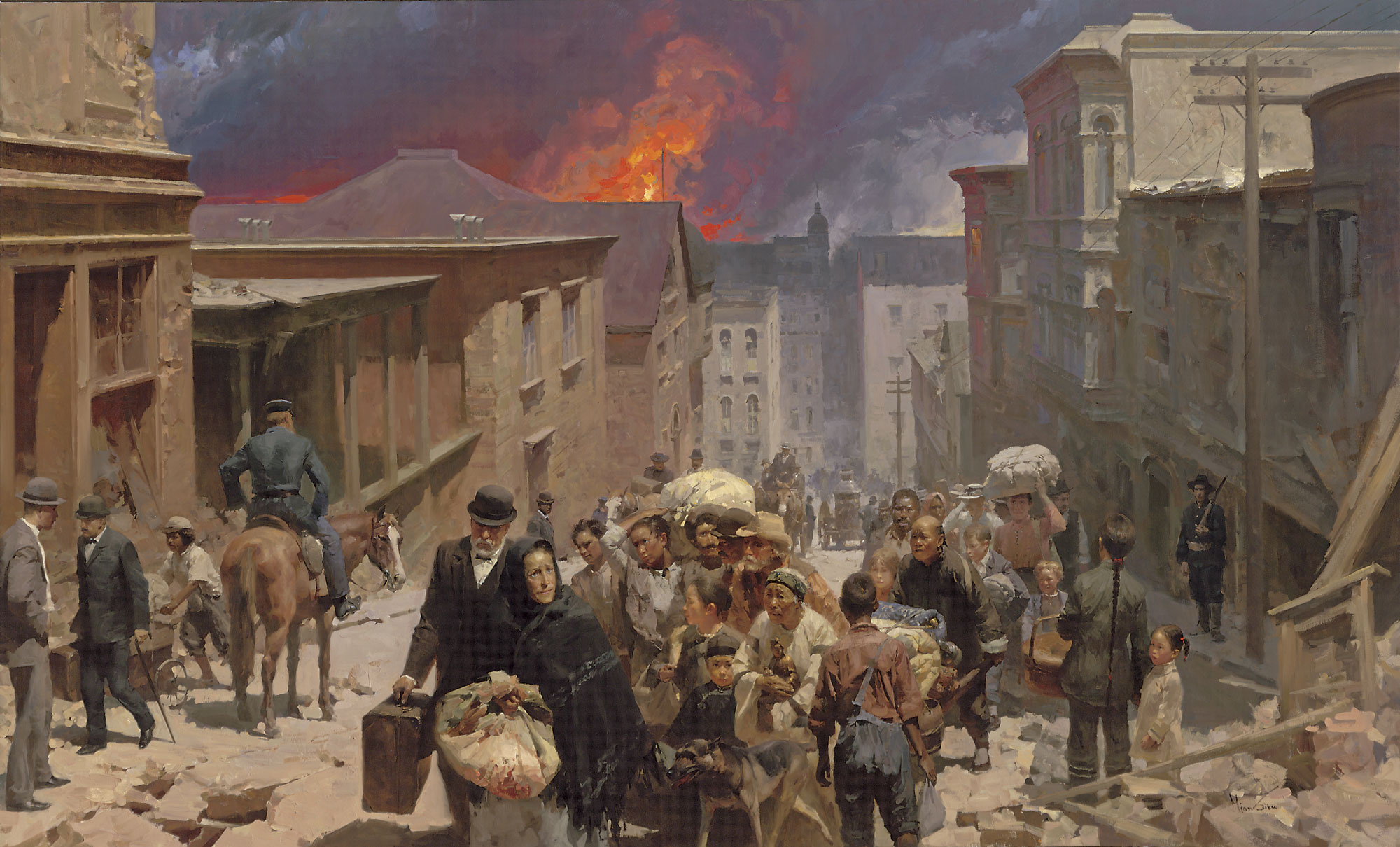
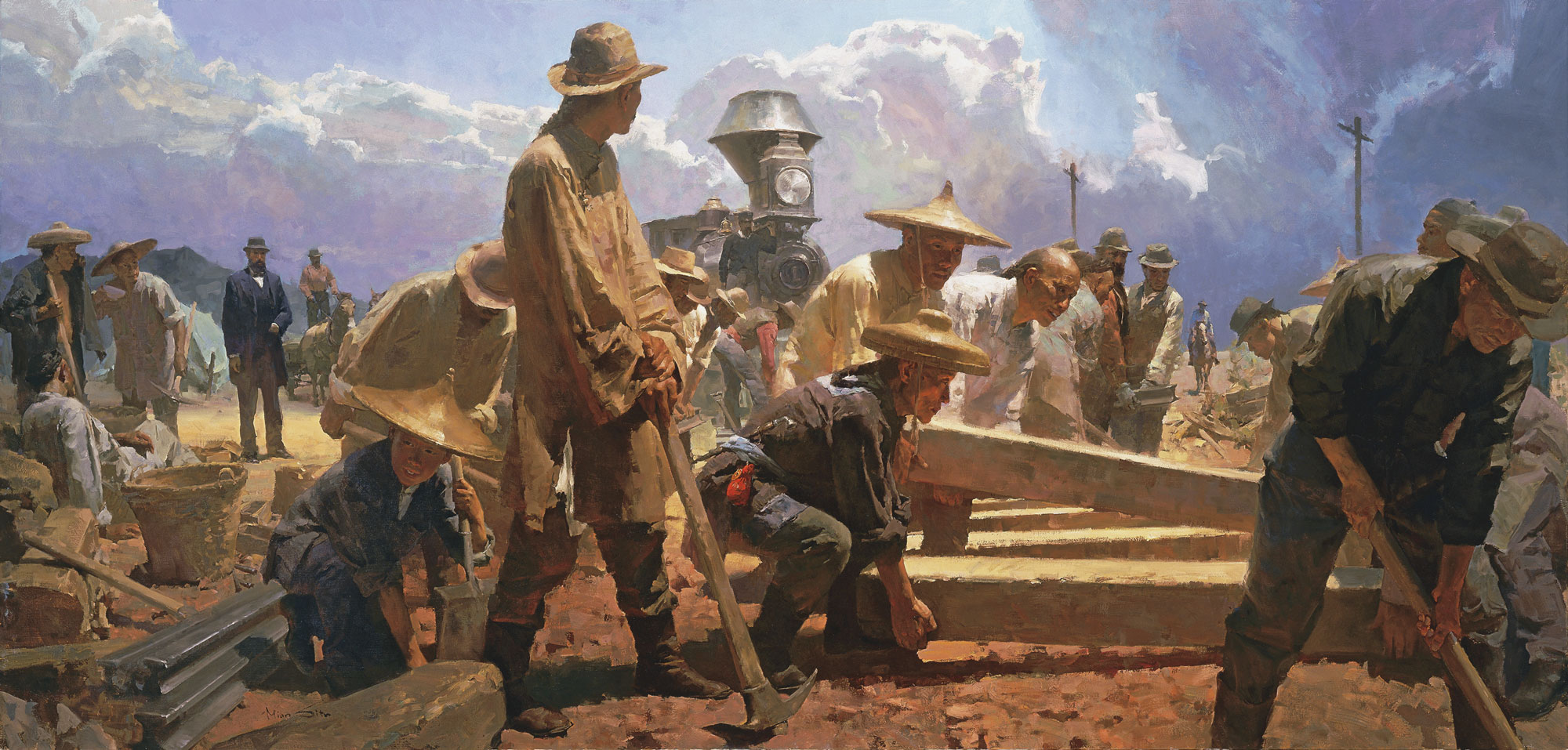
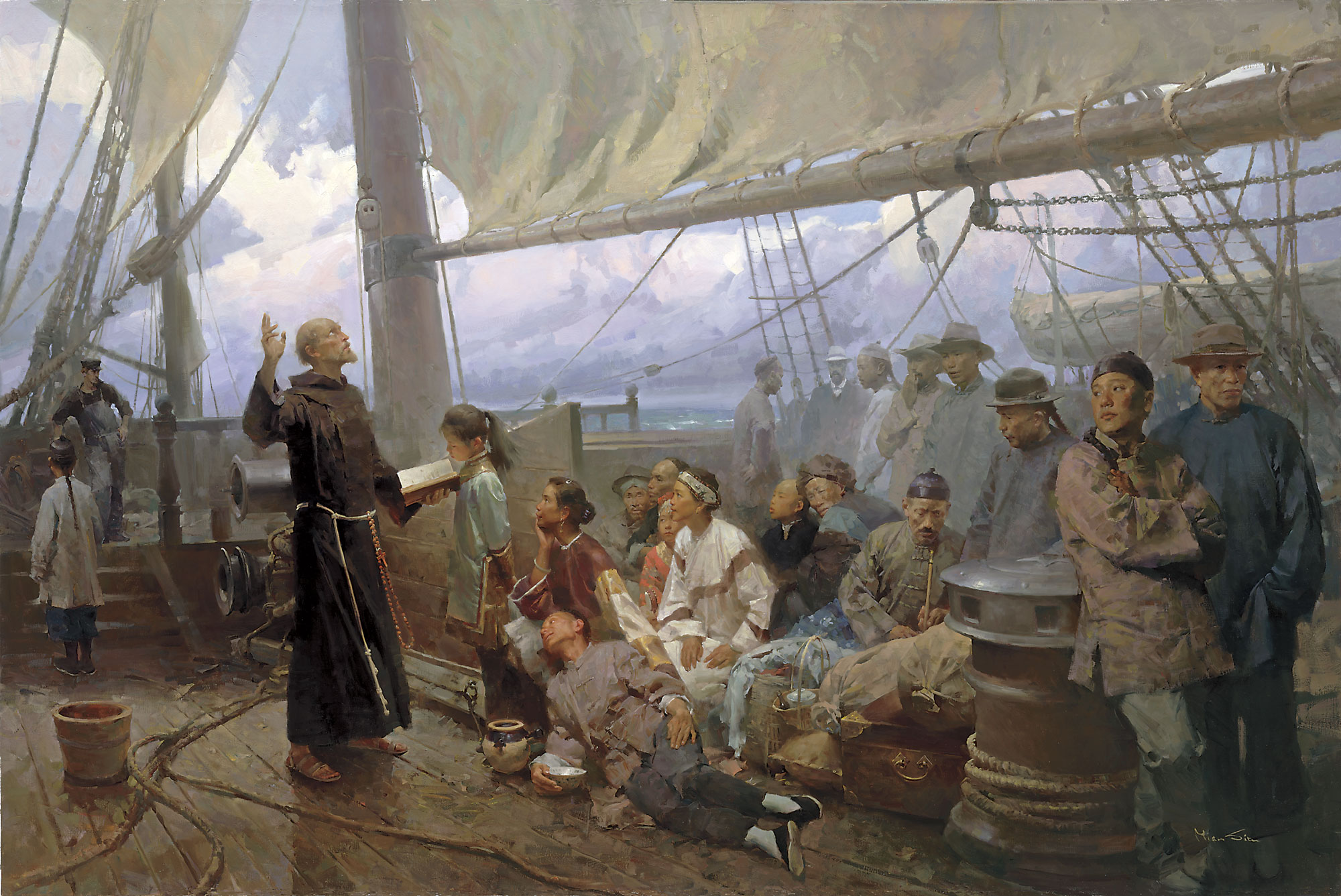
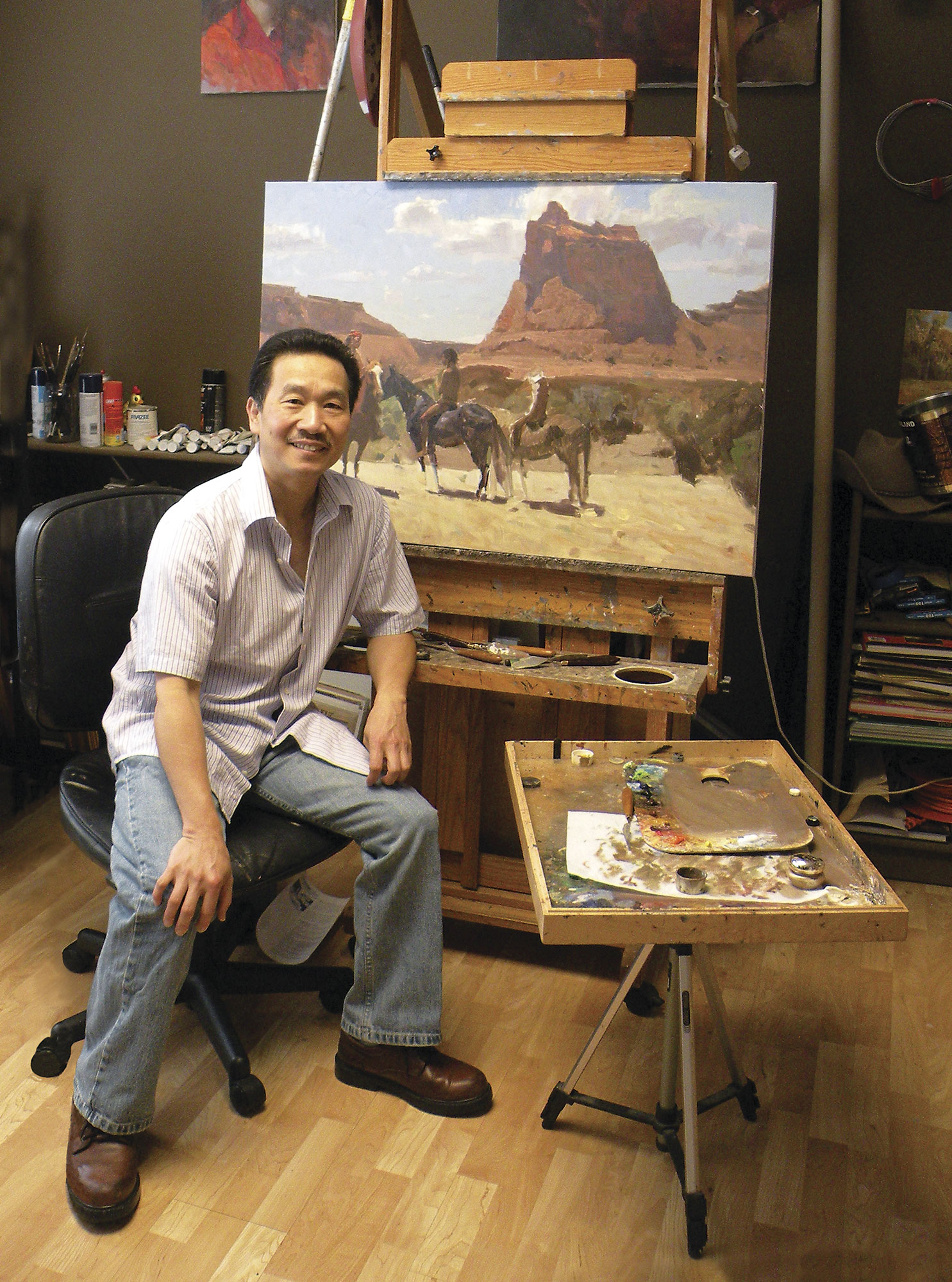
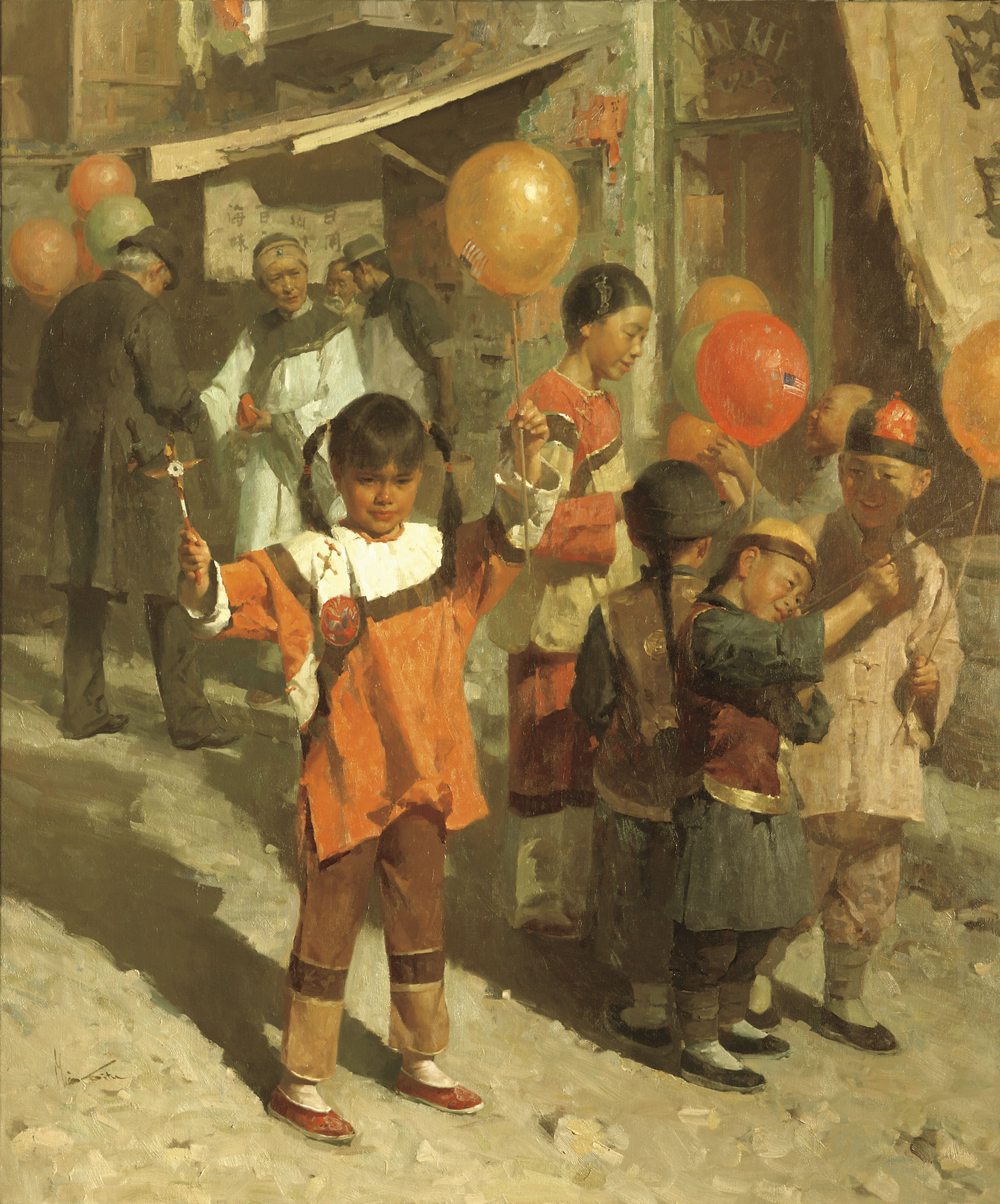
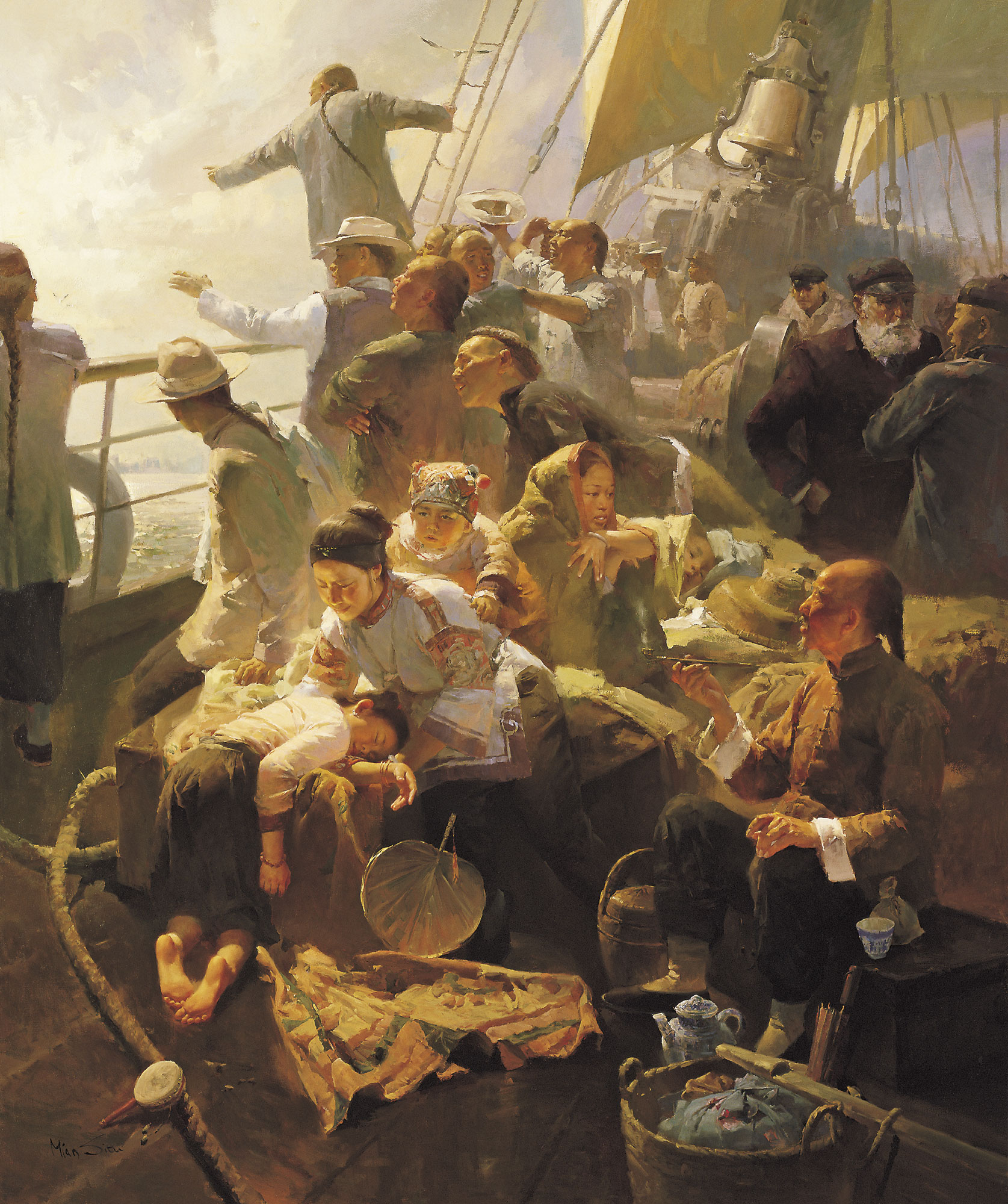
No Comments